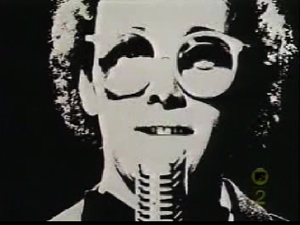YouTube 100 Is The Tops In Music Videos
posted in: Music News
Who can we attribute the quote “Video killed the radio star” to? Was that Confucius?

Nope, it was this guy. What a visionary.
In any case, in the early aughts it was looking like video finally got what was coming to it, and was hunted down and felled by the Internet. Vengeance is sweet. However, video must be a vampire or a zombie or something as it’s beginning to look like it’s made a comeback. All thanks to… the Internet, in a startling plot twist.
YouTube quietly unveiled new functionality to its dedicated music page on May 11th. What little official fanfare it got appears to have come from a post on YouTube’s official blog. The Top 100 feature is pretty understated in its presentation, a relatively small section to the right side of the page beneath the masthead of the top “stories” on the page. It’s not like YouTube really needs to market itself though as the resulting Internet press frenzy about the move has already churned out tons of coverage and a few think pieces about what it all means.
 According to the aforementioned statement from YouTube, the chart is designed to “track song popularity in user-generated and professional music videos”. The new chart is going to be published weekly and is compiled from “song traffic across official music videos, user-uploaded videos and viral debuts,” to provide a “holistic view of song popularity”. Essentially, it’s not just the song’s hits on one YouTube video page, but the impact that song has made on the Internet. The bigger the splash and the more relevant, the higher up the chart it goes. Hence the inclusion of Rebecca Black‘s video for “Friday””or the song that just won’t die”which landed at Number 8 in the debut week of the chart while J. Lo took the historic honors for the first Number 1 video on the chart.
According to the aforementioned statement from YouTube, the chart is designed to “track song popularity in user-generated and professional music videos”. The new chart is going to be published weekly and is compiled from “song traffic across official music videos, user-uploaded videos and viral debuts,” to provide a “holistic view of song popularity”. Essentially, it’s not just the song’s hits on one YouTube video page, but the impact that song has made on the Internet. The bigger the splash and the more relevant, the higher up the chart it goes. Hence the inclusion of Rebecca Black‘s video for “Friday””or the song that just won’t die”which landed at Number 8 in the debut week of the chart while J. Lo took the historic honors for the first Number 1 video on the chart.
But what does this really mean? Not much as of yet, but it portends some good things. We’ve talked about the return of the big music video before and we aren’t the only ones to notice that a lot of big artist have big productions to go along with their songs. A driving factor in this may be the revenue sharing system that YouTube has in place. Remember “Girlfriend” from 2007? A quick reminder:
If the Vevo tag didn’t tip you off then understand that the video is no longer hosted on YouTube proper. That said, before the file was pulled off the site in 2009 the clip had garnered a staggering 130+ million views. Thanks to the revenue sharing program, those views translated into $2 million for Avril Lavigne and her team. Add that to the royalties from countless spins on radio and the fact that the track was the top selling song of 2007 (7.3 million copies sold!) all contributes to a hefty paycheck. Then consider the fact that the majority of the videos linked to the site are hosted on YouTube partner Vevo and voilí ! In the Top 100 chart you’ve got a neat little tool to help generate traffic and revenues across a few platforms for both the artists and Web sites involved.
But consider the impact that actually matters to you, the fan. Although the exact metrics of how YouTube charts the performance of each video isn’t exactly clear, they’re really pushing the impact that users have on the standings. That’s how YouTube celeb NicePeter ended up on the chart despite the relative lack of views and fame compared to his competition. This all fits with the ethos YouTube and parent company Google as Internet entities.
Thanks to the user-generated influence on the chart the proceedings have an egalitarian feel to it. Now the chart is still in a nascent stage so it’s not yet a web destination in it’s own right. However, it’s reasonable to think that it could become an important measure of web success. For an artist”either a music video producer or a performer”to have something appear on the chart alongside vetted, Top 40 household names could be a big boost to their credibility and their careers in the future.
Finally we, the users, viewers, consumers of digital wares”we benefit the most from this. With the Top 100 chart, YouTube has given us professionally-curated entertainment pulling from probably the most diverse and expansive pool of talent anywhere. Simple to use and understand (it’s a single chart, how can you get more straight forward?) this has “quality time suck” written all over it. Now people are saying this could be the start of something big. Gizmodo’s Adam Covert, speaking about the chart, wrote “[N]ow that they’ve added the YouTube 100, we have a starting place… It’s a reason to care about music videos again.” Now we won’t go that far. While the benefits might not be immediately clear or present this is a development that portends good things. If the Top 100 chart can inspire creativity, competition and entertain us” a tall order indeed”then more power to YouTube. If not, then we’ll always have funny cat videos to fall back on.
